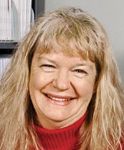Keratoconus counseling insights offered with the Collaborative Longitudinal Evaluation of Keratoconus study
Data from the Collaborative Longitudinal Evaluation of Keratoconus (CLEK) Study are a useful resource for providing evidence-based information to patients with keratoconus.

Key Points

"Keratoconus patients who search the Internet to learn about their disease will find information that can be frightening and devastating," said Dr. Zadnik, chairman of the CLEK Study, associate dean and Glenn A. Fry Professor, The Ohio State University College of Optometry, Columbus. "Findings from the CLEK Study can be used to provide them with evidence-based information."
Dr. Zadnik prefaced her discussion with an overall caveat about generalizing findings from clinical studies. Considering whether the CLEK Study data are relevant to an individual patient requires understanding how keratoconus was defined for the purposes of the study and the characteristics of the patients enrolled, she noted.
Some of the most common questions patients may present with:
"It appears that RGP lenses are the mainstay of visual correction for this disease," Dr. Zadnik said. "Very few patients in this study were using the more exotic contact lens options."
Further, data from a questionnaire on vision-specific quality of life revealed that patients reported high levels of ocular pain whether or not they wore contact lenses. "It may be that eye rubbing does not cause the disease, but rather that patients are rubbing their eyes because they hurt," Dr. Zadnik noted.
"Although these data are not prospective, they do confirm the finding from Korb's 1982 paper that found patients are at greater risk for scarring given a flat fit," Dr. Zadnik said.
Take-away for clinicians
At year 1, data on vision-specific quality of life began to be collected using the National Eye Institute Visual Function Questionnaire (NEI-VFQ). Relative to age-matched controls wearing RGP contact lenses for chronic, non-keratoconus diagnoses, the patients in CLEK scored significantly worse on seven of eight NEI-VFQ subscales. Of even greater interest, the relatively young patients with keratoconus also scored significantly worse than participants in the Age-Related Eye Diseases Study who had intermediate or advanced age-related macular degeneration on subscales for distance vision, social function, and mental health.
"When I first saw these data, I remember thinking that keratoconus must be a really devastating disease to have. That gave me a new perspective on patient care," Dr. Zadnik said. "Frequently, keratoconus patients can be demanding and exhausting, but now I realize their disease affects their everyday life in profound ways." A study undertaken by Kerry Gield, OD, MS, a graduate student of Dr. Zadnik's, explored coping strategies of patients with keratoconus and found that compared with age-matched norms, the keratoconus patients tend to be nonadherent to therapy and disrespectful of their health-care practitioners.
"This was also very instructive," Dr. Zadnik concluded. "Sometimes keratoconus patients are perceived as having a 'funny' personality, but it may be that their interactions with us reflect their method of coping with their chronic disease."
Newsletter
Want more insights like this? Subscribe to Optometry Times and get clinical pearls and practice tips delivered straight to your inbox.